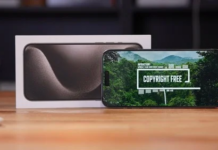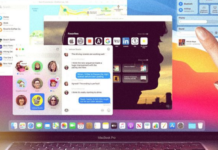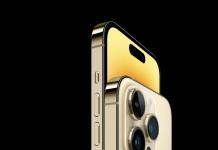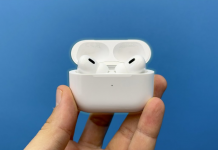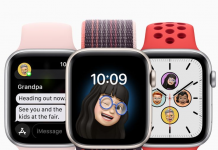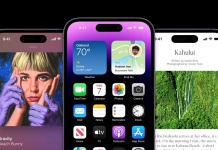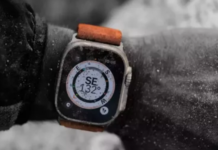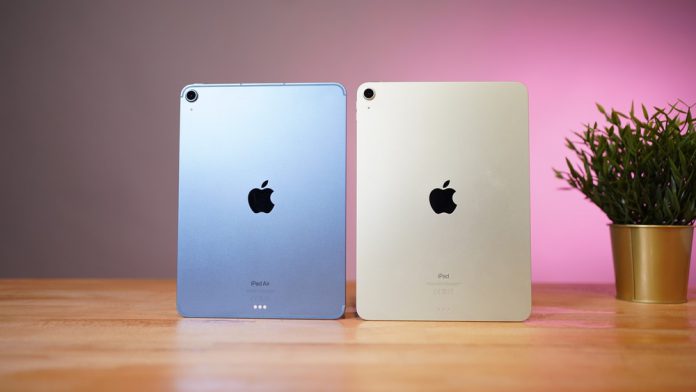Last week Apple held its Peek Performance event, an event that left its mark especially for the unexpected arrival of Apple Silicon M1 Ultra (many expected M2) and the new Mac Studio, but which was actually an opportunity to make the announcement of the update of the iPhone SE and iPad Air. Just the latter is the product I want to talk about today in this review.
Now in its fifth generation, iPad Air has been for some years what we could consider as the product halfway between iPad and iPad Pro. However, I must admit that this last refresh has dug an even more important gap than the first and has brought it very closely to the second, almost to the point of wondering if it makes sense to aim directly at the top of the range model.
I’ll start immediately by talking about design and materials because to all intents and purposes iPad Air of the fifth generation, as far as these aspects are concerned, is fundamentally identical to its predecessor. The lines have remained the same: clean, sober, in full Apple style and absolutely pleasant to observe. I will not hide it, I think it is the tablet that I like most aesthetically among those proposed by the Cupertino company, and not only. The fact that it is then available in many different colors is a plus not to be underestimated for lovers of customization. The new Blue color, the one we have available for review, is very beautiful and has reflections ranging from cobalt to oil depending on how it intercepts the light.
Aesthetically it has not changed and therefore the dimensions have also remained identical. The thickness is only 6.1 mm, and it is one of the features that make it very comfortable to carry. Along with this we obviously also have the weight that has increased by 2 or 3 grams compared to the 2020 model and stops the scale at 462 grams in the case of the heaviest version, the one therefore with 5G connectivity. Let’s talk in simple terms about the weight of about two iPhone 13 Pro Max, with the difference that the latter you carry it in your pocket, while iPad Air in a backpack or in the bag for good peace of your shoulders that will not suffer too much.
Despite the reduced thickness of which I have just told you, there is still a feeling of good solidity and in general it seems to have in your hands a premium and well-assembled product. There are no certifications at the level of impermeability but we can imagine that some sketches are not a problem anyway; of course I would avoid soaking it in a hot tub or watching Netflix in the shower.
Along the frame we find four series of holes that could suggest the presence of 4 speakers. Actually the speakers are only two but still offer a stereo sound of excellent quality. Apple, moreover, has always accustomed us to very accurate products in this aspect and often and willingly, as far as audio is concerned, the apple devices are positioned as a reference in their respective market segments. Very well the reproduction of highs and mids but also on the bass we have a good feedback, and it is not a trivial thing if we consider the small size of the driver cones.
At the center of one of the two short sides we then have the USB-C, already present on the iPad Air 4 but now updated and able to reach data transfer rates of 10 Gb / s. There is no Thunderbolt support yet but let’s say that even so we should not have particular bottlenecks with the most common accessories.
Together with the holes of the speakers and the type C we find the power button with integrated fingerprint reader that is quite fast and accurate. What still does not convince me about this sensor is the position. Whether you use iPad both in landscape and portrait mode you will still have to go looking for it specifically forcing you to change the handle. Precisely for this reason I advise you to record the fingerprints of both indexes, so as to be more comfortable in unlocking regardless of the position of the tablet. I would certainly have preferred a front sensor, in the frame or under the screen, but it would have required a change in the design or in any case of the ad-hoc components, reducing the minimum expense / maximum yield effect behind this update.
Dimensions identical to iPad Air 4 and therefore you will have already understood that even the panel is basically the same adopted almost two years ago. We are talking about a 10.9-inch diagonal Liquid Retina IPS display with a resolution of 2360×1640 pixels and a density of 264 ppi. The bezels of this screen are quite small and therefore lead to a screen size ratio of about 81%. It is certainly not a record but let’s say that it remains a good compromise to have a pleasant glance and a good margin to rest the palm when we hold the tablet with one hand.
As befits every fairly recent Apple product we then have truetone technology, here accompanied by support for the Wide Color Gamut. The factory calibration is discreet, so much so as to lead us to have an average delta E of 2.7 for the grayscale, testifying to a fairly correct white balance. The sRGB standard is then 100% covered while the DCI-P3 standard stops at a decent 76%.
In terms of luminance, Apple declares a maximum value of 500 nits, which is quite close to the result of our measurements. Specifically, the probe we used for the tests showed a maximum value between 450 and 460 cd / sqm. However, it is sufficient brightness to allow comfortable use in the vast majority of situations. Even outdoors, as long as you do not put us under the sun at noon in the middle of August, you can work without too many problems.
In short, the usual excellent Apple panel that, despite the technology used, still maintains a more than sufficient contrast ratio and quite deep blacks. Although it is therefore an IPS panel we have a yield that in most cases does not make us regret oled solutions, waiting for this type of display to arrive on the iPad; who knows that the next version…
Just because I just told you about the display I spend a few words on the 12 megapixel front camera that updates compared to the 7 megapixels of the previous model. However, not only the resolution changes, the lens is in fact ultrawide and the Center Stage technology has been added which in a certain sense mitigates the problem of positioning the selfie camera itself. Being on one of the two short sides, using iPad in landscape mode you normally get a rather decentralized shot that is instead corrected by Center Stage. Unfortunately the function is not yet supported by all the apps for video calls but let’s say that in all the most used ones it is already included.
Nothing changes instead with regard to the main camera that remains a 12 megapixel with Wide sensor, lens with f/1.8 aperture and autofocus. There is optical stabilization and HDR is also supported but it is still a mid-level camera, useful in emergency situations but certainly not at the same level as that of the iPhone. In general, you take good photos during the day, while in the evening you always prefer, if possible, the camera of your smartphone.





